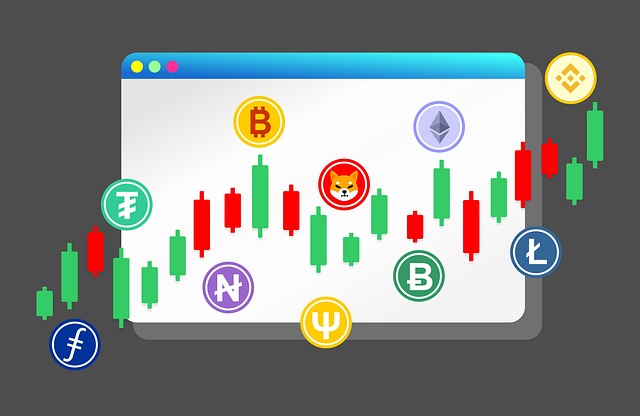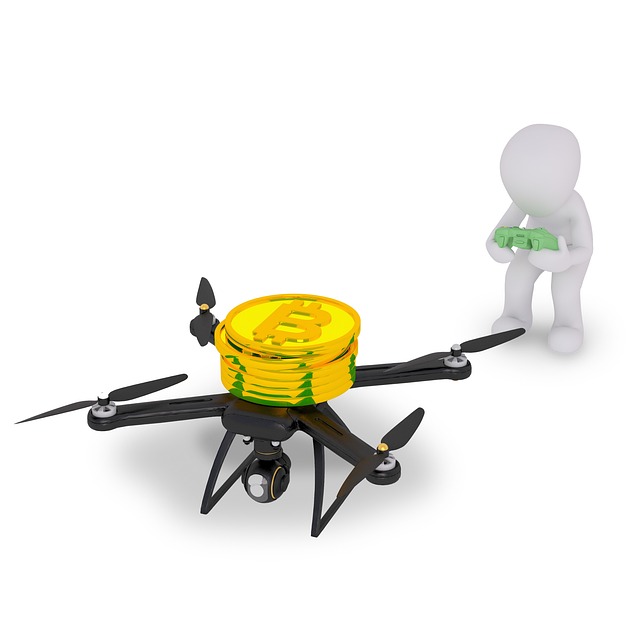Which Crypto App Is the Best: A Practical Buyer’s Guide
Author: Jameson Richman Expert
Published On: 2025-11-10
Prepared by Jameson Richman and our team of experts with over a decade of experience in cryptocurrency and digital asset analysis. Learn more about us.
As more people ask “which crypto app is the best,” choosing the right platform can feel overwhelming. This article answers that question by comparing types of crypto apps, listing evaluation criteria, showing recommended apps by user need, and giving actionable steps to test and secure any app you choose. Read on to find the best app for trading, hodling, staking, or exploring altcoins, and use the practical framework below to reach your own answer.

Why choosing the right crypto app matters
Crypto apps are where you interact with markets, custody assets, and execute strategies. The wrong app can cost you money in fees, expose you to security risks, or limit access to coins and features you need. The right app improves execution, lowers costs, and secures your holdings—so answering “which crypto app is the best” is more about matching features to needs than naming a single winner.
- Security: A secure app protects against hacks, phishing, and account takeover.
- Fees: Trading, deposit, withdrawal, and conversion fees add up.
- Asset availability: Some apps list hundreds of altcoins; others support only major coins.
- Functionality: Margin, derivatives, staking, savings, and automation differ widely.
- UX and support: Intuitive apps and responsive support reduce friction and risk.
Types of crypto apps — which one suits your goals?
1. Centralized exchange apps (CEX)
Apps like Binance, Coinbase, Kraken, Bybit, Bitget, and MEXC are centralized exchanges that custody funds for you and offer trading pairs, fiat onramps, and advanced features. They are best when you want liquidity, speed, and advanced order types.
2. Non-custodial wallets
MetaMask, Trust Wallet, and hardware wallets (Ledger/Trezor) give users full control of private keys. Best for long-term holders and DeFi users who need direct on-chain access.
3. Mobile-first investment apps
Apps such as Coinbase (also a CEX), Crypto.com, and Robinhood emphasize simplicity and fiat integration. Good for beginners focusing on buy-and-hold strategies.
4. Derivatives and margin trading apps
Bybit, Bitget, and Binance offer futures, options, and margin accounts—suitable for experienced traders who understand leverage and risk management.
5. Swap/DEX apps
PancakeSwap, Uniswap, and other DEX frontends let you swap tokens directly from your wallet on-chain without an intermediary. Ideal for accessing new tokens or tokens not listed on CEXs.
6. Portfolio trackers and aggregator apps
Zapper, CoinStats, and CoinTracker help you keep track of holdings across wallets and exchanges and are useful for reporting and analytics.
Core criteria to evaluate when asking “which crypto app is the best”
Use this checklist to evaluate any crypto app before committing capital.
- Security features: Two-factor authentication, withdrawal whitelist, IP/device management, cold storage ratio, insurance coverage.
- Regulation & compliance: Registered/licensed where applicable, clear KYC/AML policies, adherence to local rules.
- Fees: Trading fees (maker/taker), deposit and withdrawal fees, FX spreads.
- Liquidity: Order book depth and volume for the pairs you care about.
- Asset coverage: Number and quality of supported coins and tokens, availability of stablecoins and fiat pairs.
- Product features: Staking, lending, margin, derivatives, earn/savings programs, API access.
- User experience: Mobile and web UX, speed, error handling, educational resources.
- Customer support: Response times, support channels, dispute resolution record.
- Reputation: Track record, security incidents, and community feedback.

How to prioritize criteria by user type
Not everyone needs the same features. Below are common user profiles and what matters most for each.
- Beginner / Buy-and-Hold: Easy fiat onramp, low friction, educational content, strong security (Coinbase, Crypto.com).
- Active trader: Low fees, deep liquidity, advanced orders and charting (Binance, Bybit, Bitget).
- Altcoin hunter: Wide token selection, tokens listed quickly (MEXC, KuCoin). See altcoin ideas and strategies on this guide to the best altcoins to buy on Coinbase for inspiration.
- DeFi user: Non-custodial wallets, DEX access, ability to connect to Web3 apps (MetaMask, Trust Wallet).
- Long-term security-first holder: Hardware wallet integration, self-custody best practices (Ledger/Trezor + MetaMask).
Note: for detailed altcoin research geared to Coinbase listings and strategy, see this practical guide to the best altcoins to buy on Coinbase.
Top crypto apps by category (practical recommendations)
Below are recommended apps with a short rationale and links where appropriate. These recommendations map directly to different user needs.
Best for beginners — Coinbase
Coinbase provides a clean onboarding experience, strong compliance, transparent fees (though higher than some competitors), and educational resources. If you’re starting out and asking “which crypto app is the best” for simplicity and trust, Coinbase often ranks highly.
Best for most active traders — Binance
Binance offers deep liquidity, low maker/taker fees, margin and futures, and a broad selection of tokens. For advanced traders who want cost-efficient execution and a comprehensive feature set, Binance is frequently the best choice.
Sign up for Binance here: Create a Binance account.
Best for derivatives traders — Bybit and Bitget
Bybit and Bitget are designed for derivatives traders, offering perpetual futures, options, and tight leverage controls. They also support automation and alert workflows; see this guide on Bybit TradingView alerts setup, automation, and strategies to automate trade ideas and alerts with Bybit.
Sign up links:
- Bybit: Open a Bybit account
- Bitget: Open a Bitget account
Best for altcoins and listings — MEXC
If you’re hunting small-cap altcoins and newly listed tokens, MEXC and similar exchanges often list tokens earlier and provide high variety. Be aware of higher risk and research thoroughly.
Sign up for MEXC: Register at MEXC.
Best non-custodial wallet — MetaMask + hardware wallet
MetaMask (mobile and browser extension) is the de facto Web3 entry point. For security-sensitive holders, pair MetaMask with a hardware wallet (Ledger/Trezor) to sign transactions while keeping private keys offline.
Best for automated trading and alerts
For traders wanting automation, use platforms that integrate with TradingView alerts or offer robust APIs. Bybit and Bitget support such workflows; see practical instructions for automating alerts with Bybit in the earlier link. Also consider third-party signal and bot services—but vet them carefully. This guide to choosing the best trading signals Telegram channel provides tips on evaluating signal providers before paying for them.
Comparing fees, spreads, and costs
Fees affect returns. When comparing apps, evaluate the full cost structure:
- Trading fees: Maker vs taker fees. High-frequency traders can save substantially with low maker fees or maker rebates.
- Deposit/withdrawal fees: Fiat deposits via bank transfer may be free; card purchases usually incur fees. Crypto withdrawals are network-dependent.
- Spread: The difference between buy and sell price—retail apps sometimes widen spreads to generate revenue.
- Inactivity or conversion fees: Some platforms have hidden charges for small accounts or conversions between currencies.
Example: Binance is widely known for low trading fees (especially with BNB discounts), while Coinbase has higher fees but easier fiat onramps and stronger custody trust for beginners. Derivatives platforms may offer lower fees per trade but carry higher risk due to leverage. Always check the fee schedule on the exchange’s official page before trading.

Security best practices for crypto apps
Security is the most important metric when answering “which crypto app is the best” for anyone holding substantial value. Follow these practices:
- Enable two-factor authentication (2FA): Use an authenticator app (Google Authenticator, Authy) rather than SMS when possible. For an overview of 2FA, see the Wikipedia entry on multi-factor authentication.
- Use withdrawal allowlists: Restrict wallet addresses eligible for withdrawals.
- Fund segregation and insurance: Prefer exchanges that publish proof of reserves or offer insurance coverage for custodial funds.
- Hardware wallets for large holdings: Keep the majority of long-term holdings in cold storage devices (Ledger/Trezor).
- Phishing awareness: Verify URLs, avoid unsolicited links, bookmark official login pages, and never share seed phrases.
- Periodic account audits: Revoke unused API keys, review device access logs, and maintain up-to-date software.
For tax and regulatory guidance about virtual currencies, review the IRS page on virtual currency (if you are a US taxpayer) or your local tax authority’s guidance; for example, see the IRS FAQs on virtual currency transactions.
How to test any crypto app safely before committing
Don’t deposit large amounts without a trial. Follow these steps to evaluate an app:
- Perform a small deposit: Start with a low amount to test deposits, trading, and withdrawals.
- Execute a demo trade: Use testnet features if available, or place a small live trade to test order execution and slippage.
- Test withdrawals: Withdraw a small amount to an external wallet to verify speed and withdrawal fees.
- Check KYC and limits: Complete KYC to understand limits and verification timeframes.
- Review support response: Open a support ticket and assess the response quality and speed.
- Inspect API & automation tools: If you plan automation, test API key creation, permission granularity, and sandbox/testnet options.
Common pitfalls and how to avoid them
- Using untrusted signal providers: If you use paid signals or Telegram channels, verify track records and use small test trades first. See guidance on choosing trading signals to avoid scams.
- Ignoring spread and hidden fees: Check both visible fees and the effective spread on market orders.
- Failing to diversify counterparty risk: Don’t keep all funds on one exchange—split between custodial and non-custodial solutions.
- Chasing listings: New token listings can be profitable but carry high rug-pull risk—perform on-chain checks and team due diligence.

Automation, alerts, and scaling your strategy
Traders increasingly rely on automation and alerts to act faster. Platforms that integrate with TradingView alerts, bots, or offer native automation reduce manual latency and errors. For practical steps on integrating TradingView alerts with an exchange like Bybit, consult the Bybit automation guide linked earlier.
How regulators affect the question “which crypto app is the best”
Regulatory environment matters: certain exchanges restrict services or tokens in some jurisdictions. When evaluating apps, check regional availability, licensing, and compliance policies. For example, exchanges serving US retail customers often have stricter KYC and limited token listings compared to offshore platforms.
Decision framework — choose the best app for you
Use this quick decision flow to narrow your choices:
- What is your primary goal? (Trading, HODL, DeFi, staking, income)
- Do you prefer custody or self-custody?
- How important is low fee vs simplicity?
- Do you require derivatives or margin?
- Are you seeking wide altcoin access or the larger blue-chip tokens?
Match answers to recommendations:
- Simple fiat onramp & learning: Coinbase
- Low fees & advanced trading: Binance (create account here)
- Derivatives & automation: Bybit (sign up) or Bitget (register)
- Altcoins and new listings: MEXC (join MEXC)
- Self-custody and DeFi access: MetaMask + Ledger

Practical examples — choosing for specific use cases
Example 1: College student who wants to dollar-cost-average into BTC and ETH
Priority: low friction, low minimums, good mobile UX. Best pick: Coinbase or Crypto.com. Use recurring buys, secure 2FA, and test withdrawals with small amounts before moving large sums.
Example 2: Day trader seeking high leverage across futures
Priority: low fees, deep liquidity, levered products. Best pick: Binance or Bybit. Set strict risk controls and use stop-loss, position sizing, and API automation for efficiency.
Example 3: DeFi farmer exploring AMMs and yield pools
Priority: non-custodial wallet, DEX access, contract interaction. Best pick: MetaMask + hardware wallet for security. Track gas costs and use reputable aggregators to find best swaps.
High-quality further reading and resources
For foundational knowledge on crypto and blockchain, consult high-authority resources:
- Cryptocurrency — Wikipedia
- Blockchain — Wikipedia
- Blockchain primer — Investopedia
- IRS FAQ on virtual currency (US taxpayers)
Use these resources and services
Want to try recommended exchanges directly? Here are easy links to register and explore their offering:
- Create a Binance account — great for low fees and advanced trading.
- Register at MEXC — useful for wide altcoin selection.
- Open a Bitget account — strong for derivatives and copy trading.
- Open a Bybit account — built for derivatives traders and automation.

Signals, alerts, and third-party advice — proceed with caution
Trading signals, Telegram channels, and paid bots can be helpful but also risky. Evaluate providers for performance transparency, community reputation, and payment method. For a structured approach to selecting signal providers, see this article on how to choose the best trading signals Telegram channel.
Advanced tip: combine apps for best coverage
You don’t need a single “best” app—use multiple tools to balance convenience, cost, and safety:
- Keep long-term holdings in cold storage (hardware wallet).
- Use a trusted CEX like Binance or Coinbase for fiat onramps and spot trading.
- Use MEXC or KuCoin for speculative small-cap altcoins, but limit exposure and conduct thorough due diligence.
- Leverage Bybit or Bitget for derivatives and automation if you have experience with leverage.
For example, you might buy BTC on Coinbase for convenience, trade altcoins on MEXC for selection, and execute derivatives strategies on Bybit—all while storing most assets in a hardware wallet.
Final answer: which crypto app is the best?
There is no single, universal answer to “which crypto app is the best.” The best app depends on your priorities: security, fees, asset access, or advanced features. For most users:
- Beginners: Coinbase for trust and ease-of-use.
- Active traders: Binance for liquidity and low fees (register here).
- Derivatives traders: Bybit or Bitget for futures and automation (Bybit link).
- Altcoin explorers: MEXC for breadth of listings (MEXC link).
- DeFi and self-custody: MetaMask + hardware wallet.
Use the decision framework and testing steps above to pick the best app for your personal needs. If you plan to automate trading or use signals, review the guides on integrating alerts with Bybit and evaluating Telegram signal providers for safer execution (see links earlier).

Closing — next steps
Decide your primary use case, test an app with a small deposit, and validate withdrawals and support. Use diversified platforms and strong security practices to reduce risk. If you’re ready to get started, consider opening accounts with reputable exchanges via the links above and pair them with a non-custodial wallet for maximum flexibility and safety.
Further reading and the linked strategy guides:
- Best altcoins to buy on Coinbase — picks and strategy
- Bybit TradingView alerts setup, automation & strategies
- How to choose the best trading signals Telegram channel
If you want, tell me your budget, trading experience, and priorities and I’ll recommend the top 2–3 apps tailored to your situation and a step-by-step onboarding checklist.